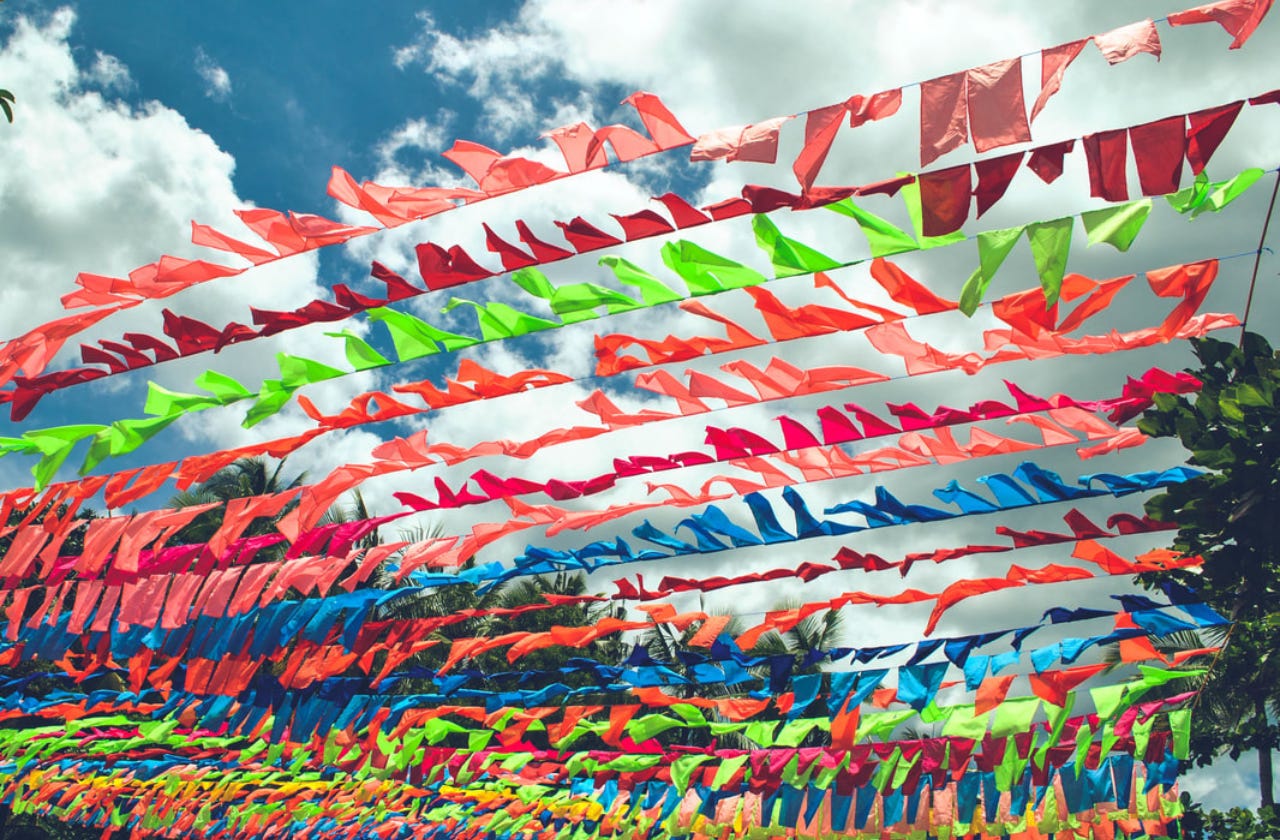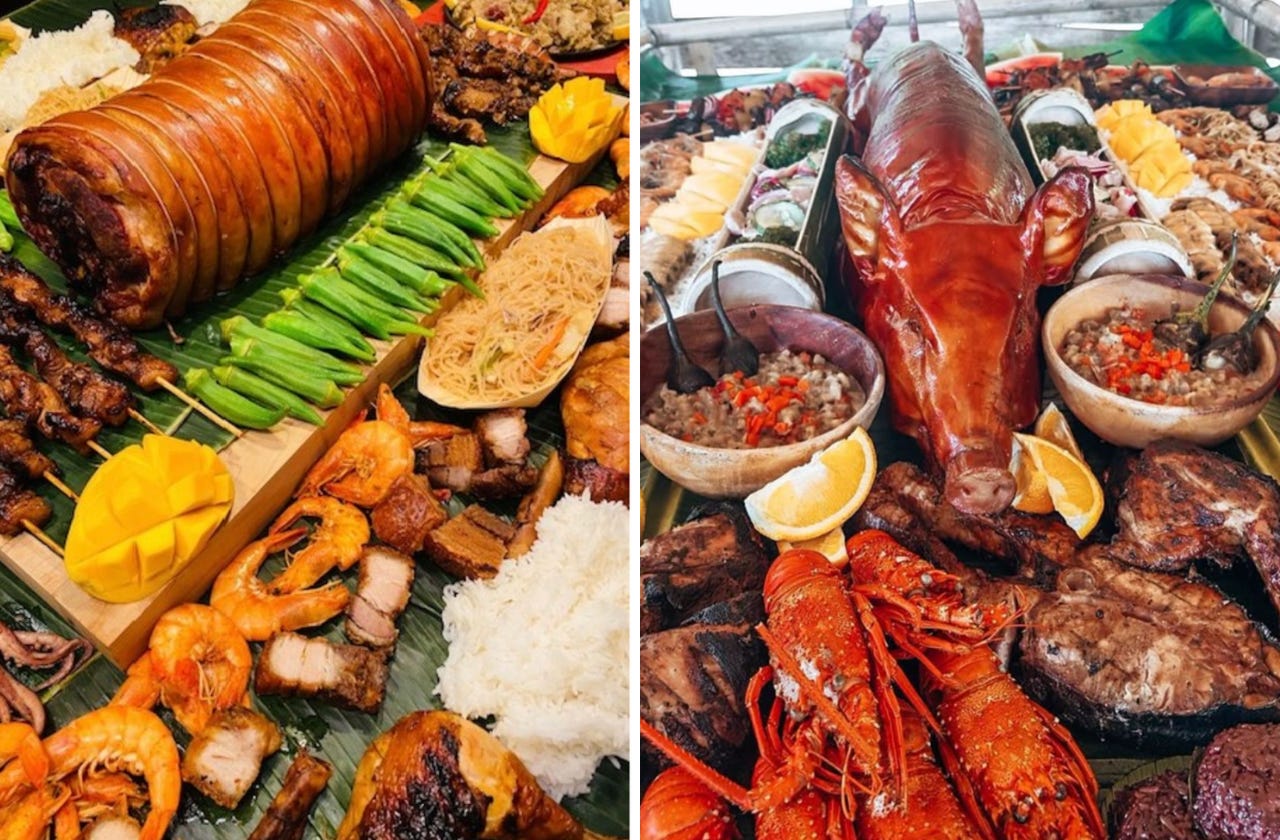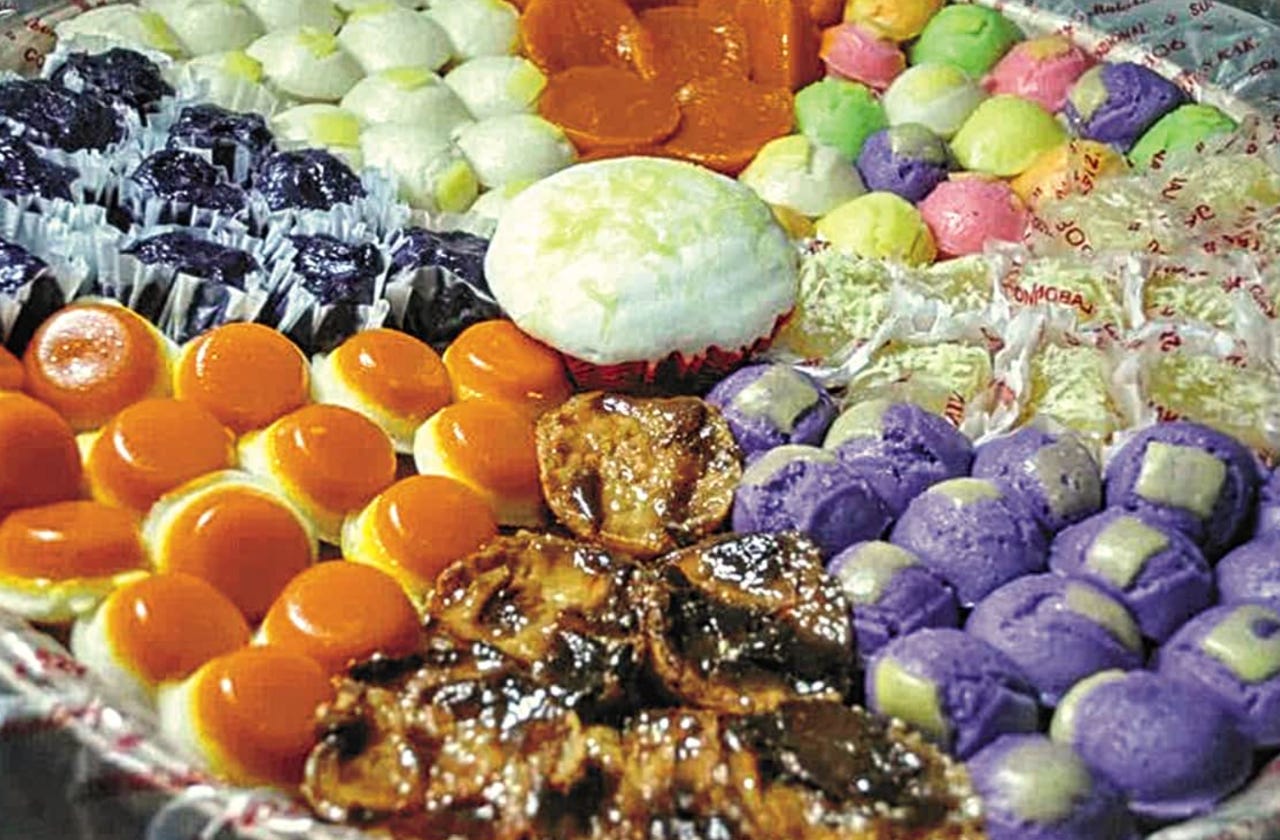The Filipino Fiesta
Exploring the sights, sounds and taste of the Filipino culture through its most festive tradition.
Ahh… the Filipino Fiesta.
Writing this article stirs up a wave of nostalgia and a kaleidoscope of colorful memories. Some of you might not fully relate, especially if you spent your childhood in big cities where fiestas might not have been as big of a deal. But for most of us small-town or small-city kids, fiestas were the highlight of the year.
May, in particular, was a time I always looked forward to. It was my second favorite month, right after December. While a kid growing up in Naga City (before my college days in Manila), I would count down the days to the start of fiesta season.
And of all the celebrations, the one I waited for most was the fiesta in my father’s hometown in Lagonoy, Camarines Sur, held every May 1st. That was when I got to see my long-distance cousins from Manila. These were rare moments of reunion that turned into warm, chaotic, unforgettable memories.
We’d play, eat ice cream, laugh, run wild through the neighborhood, watch the circus roll into town, and catch the nightly variety shows in the plaza. These were always punctuated by a big-production trip to the beach at Sabang. They were carefree days, packed with fun and simple joys. The kind of childhood memories that still make me smile today.
What Is a Fiesta?
In the Philippine context, a fiesta (literally means feast) is a celebration held in honor of a town or city’s patron saint. This tradition started during the Spanish colonial times and carried over to today. Over the centuries, Filipinos have put their own colorful and heartwarming spin on it. From big city centers to the smallest barangays, the themes, decors and ambiance might differ but the central vibe is the same: come one, come all. There’s always enough food, endless fun and meaningful fellowship awaiting everyone.
The nature of fiestas varies. Some are religious in nature, like the Sinulog Festival in Cebu held every January, or the Peñafrancia Fiesta in Naga City held in September. Others lean more cultural like the Panagbenga (the Flower Festival) in Baguio held in February, or the MassKara Festival in Bacolod held in October, to name a few. In spite of this differences, they all share that uniquely Filipino energy: part spiritual, part carnival, and 100% welcoming.
And while these fiestas fall outside of May, trust me when I say that May is still the undisputed month of fiestas in the Philippines, with towns across the country coming alive in celebration.
It’s Always About the Food…
When one mentions the words “Filipino fiesta”, the first picture that should come to mind is food. A LOT of food. It’s normal to see long tables groaning under the weight of big servings of lovingly prepared Filipino dishes.
Think lumpia, kare-kare, Bicol Express, kaldereta, and more variations of pansit than you thought existed - bihon, canton, habhab, malabon - each with its own regional twist. There’s also embutido, menudo, dinuguan, all kinds of adobo and the trays of freshly grilled seafood. And the star of the show that completes the line up - a perfectly roasted lechon - golden and glistening.
And just when you think you’re already on the verge of empacho from overeating, the dessert table calls your name. As someone with a serious sweet tooth, there’s no way I am not answering. How could I, with the colorful layers of sapin-sapin, the creamy, caramel-topped leche flan, icy halo-halo, chewy kutsinta (my favorite kakanin), and soft, fluffy puto?
And did I mention the ubiquitous Philippine local ice cream (aka dirty ice cream)? Hands down, one of the best in the world, if you ask me. These sugary and delicious treats are indeed nostalgic in many ways.
…and the People
In addition to what’s on the table, the Filipino Fiesta is also about who’s around it. With the spirit of Filipino hospitality in full display, fiestas welcome everyone: family, friends, coworkers, neighbors, and yes, even strangers are invited to sit down and eat. It’s not unusual for people to go house-hopping during fiestas, all warmly welcomed by hosts they may not even know personally.
On the other hand, with the Filipino bayanihan tradition in full swing, neighbors step in to help with cooking, setting up tables, and serving guests. Some offer their cookware, others bring extra tables or simply show up to lend their time and energy. It’s a cohesive community effort, powered by generosity, cooperation, and shared joy.
I still recall waking up in the early morning of the day of the fiesta to the sound of clanging pots, excited voices, and the distant music of the town band parading through the streets.
By mid-morning, the entire neighborhood was alive, filled with the inviting aroma of several dishes cooking at once. All in anticipation of the coming wave of feast-ready friends, neighbors and strangers alike. It was loud, it was a beautiful chaos, it was community.
The Vibe
The Filipino fiesta has a unique and certain energy that’s hard to explain and the only way to understand what I’m saying is to experience it first-hand. The streets are alive with parades and dancing, houses are decorated with colorful buntings, and most likely than not, there is a singing contest happening, which usually is one of the highlights of the evening activities.
Kids are running around in their best clothes, titas are showing off their specialty dishes, and titos and are having shots of Ginebra while the band plays on.
The evening events takes it to the next level. There’s usually a live band, a raucous street party, and if you’re lucky, a fireworks display to cap it all off. Just a scene of joy in its purest form.
A Party and More
Underneath all the confetti and karaoke, the Filipino fiesta is a celebration of identity. It’s about where you come from, who you belong to, and the stories passed down in every dish, dance, and decoration. Even in this digital age, when everyone’s busy and caught up in work and screens, the fiesta still pulls people together resulting in homecomings, reunions, reconnections.
It’s a day when time slows down, the streets come alive, and the heart of the community beats loud and proud.
So, if you ever get the chance to join a Filipino fiesta, don’t think twice. Bring an open heart and an empty stomach because in a Filipino Fiesta, everyone is welcome and no one leaves hungry.






